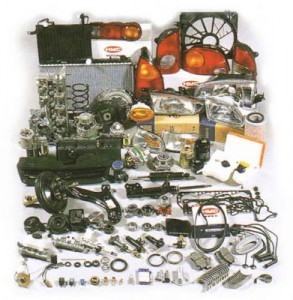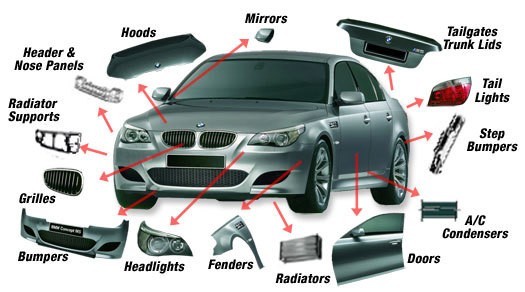Are the auto body repair parts safe?
When you are having your car repaired after an auto accident, one of the topics that is likely to come up is whether your auto body repair shop will use Original Equipment Manufacturer (OEM) parts on the vehicles they repair. It’s understandable that this would be a concern, since some aftermarket or “Like Kind and Quality (LKQ)” parts don’t always have the solid reputation that OEM parts have.
Your insurance policy is a major factor in wheter you get OEM or aftermarket parts.
If you find yourself needing car repairs after an auto accident, it is your auto insurance policy that determines what types of parts you are eligible to receive. Your parts can come from any of these three sources, OEM parts, Aftermarket parts and LKQ parts which are often used factory parts from a salvage yard. In many cases, insurance companies prefer LKQ and aftermarket parts, since they are less expensive than OEM parts by quite a lot.
But there has been a lot of discussion about aftermarket parts and their safety. This is especially true with a recent epedemic of chap and faulty chinese airbags that either did not inflate properly or failed to inflate at all. What aftermarket means, is they are parts which are not made by the manufacturer, but they are instead, copies of commonly used parts. This is a very common situation especially when it comes to mechanical parts like spark plugs, and water pumps, engine and brake parts. But the concern with aftermarket parts becomes an issue when you are dealing with “Crash parts” or the parts of a car that protect you in an accident.
The goal with any repair is return your car to the exact safety specifications as if it was never in an accident in the first place. So that (god forbid) you are ever in another accident, the vehicle will be just as safe as it did when it left the factory.
So why then would it even be legal to use parts not made by Ford or Honda or whatever you drive? The fact is, it’s perfectly legal.
OEM vs. LKQ and aftermarket
Because OEM parts are direct from the manufacturer, they are usually high quality and made specifically for your make and model. In other words they are the exact same parts that were put into your car in the first place. With LKQ and aftermarket parts, the companies who manufacture them do not have have access to all the engineering and molds used to build the OEM parts so they are essentially, knock offs. The other hand, technicians sometimes have to mold the parts to conform to your vehicle’s specifications.
With LKQ parts, which are previously used or salvaged, their condition isnt always as great as OEM parts because after all they are used parts, but they should be in decent shape. Aftermarket parts are new, but sometimes lower quality just because they are.

So why is this so important?
Well the manufactures have some very strict federally mandated and governed criteria for the design, engineering and safety of the cars they build, and that includes all of the parts. However, the ones making the aftermarket parts do not have the same oversights, in fact many have no oversights at all. It is quite possible that these aftermarket parts look the same, but they may be made of thinner or cheaper materials and may not even be safety tested. Some aftermarket parts just plain don’t even fit properly, and need to be modified by the technician just to fit the car.
Safety is most important.
This is not to say that all aftermarket and LKQ parts are bad. In fact there is a certification body called CAPA that certifies these parts, but not all aftermarket suppliers take the steps necessary to get CAPA certification.
If the manufacturer had it their way, all repairs would be made with OEM parts. And I’m sure that would probably be your preference also. If the insurers had it their way, auto body repair shops would use ONLY aftermarket parts. Which is probably not your first preference. But you also enjoy paying a lower monthly insurance premium and those savings have to come from somewhere. Now don’t get me wrong, nobody wants to put you back in a car with unsafe, inferior parts. Ulitmately it is you the consumer who has final say and there are even options.
For example if your policy states the use of Non-OEM parts, you can always offer to pay the difference between aftermarket LKQ or OEM. Or you could find a shop who refuses to use anything less than OEM, and there are shops out there that do that.
So, arm yourself with this knowledge and begin this dialogue with your insurance company, your repair shop, and work out the arrangement that you feel the most comfortable with. After all it is all about your safety and peace of mind.

